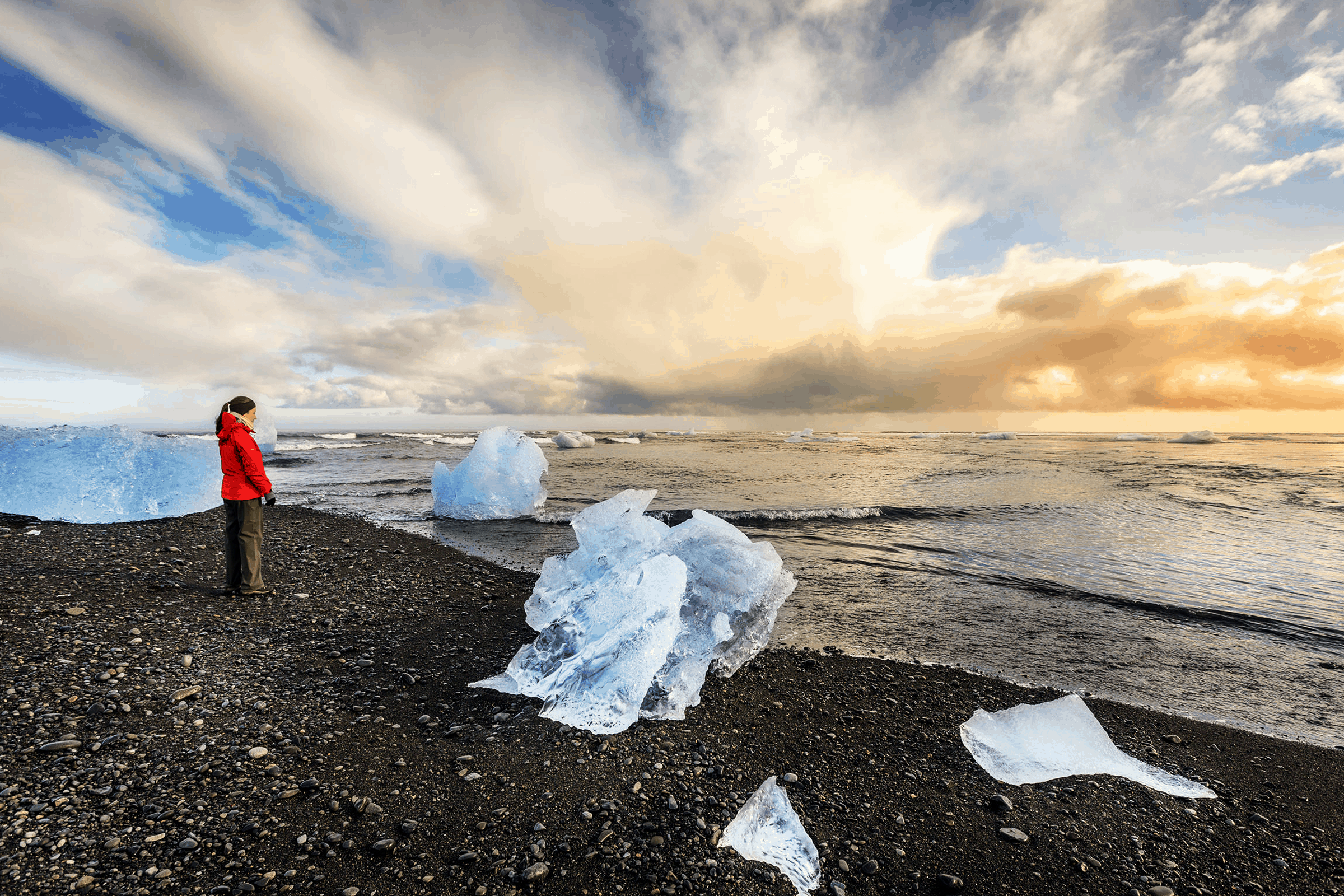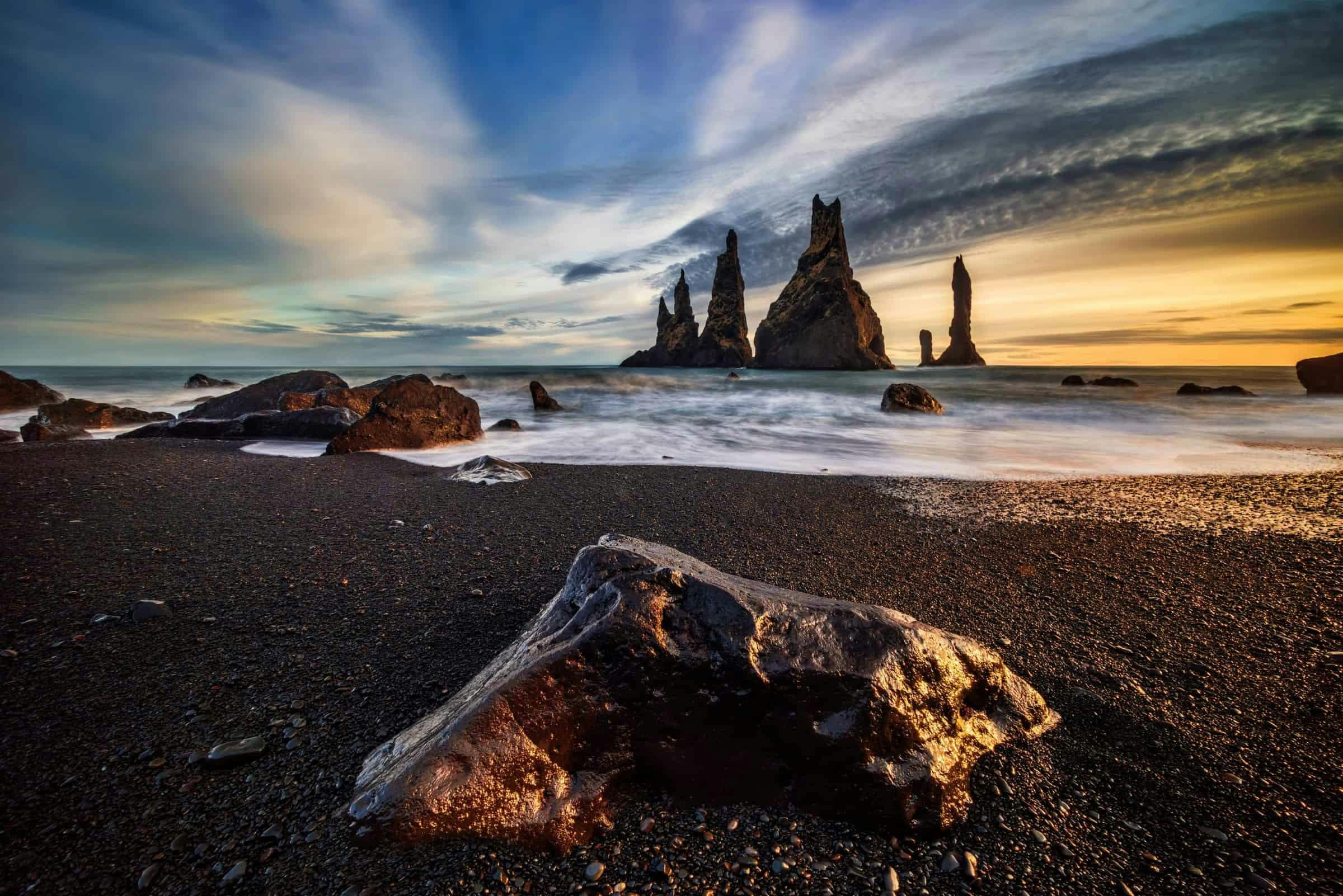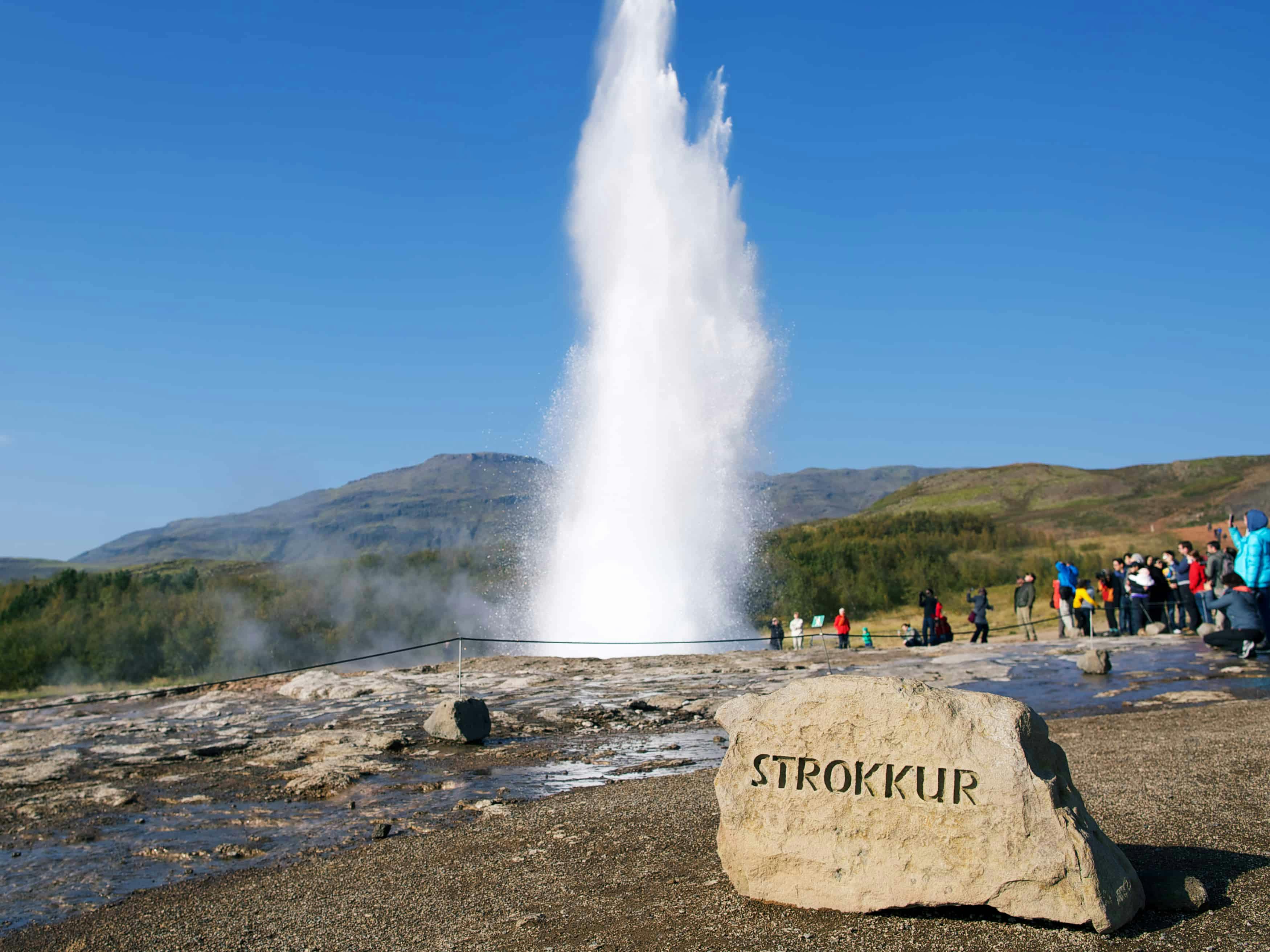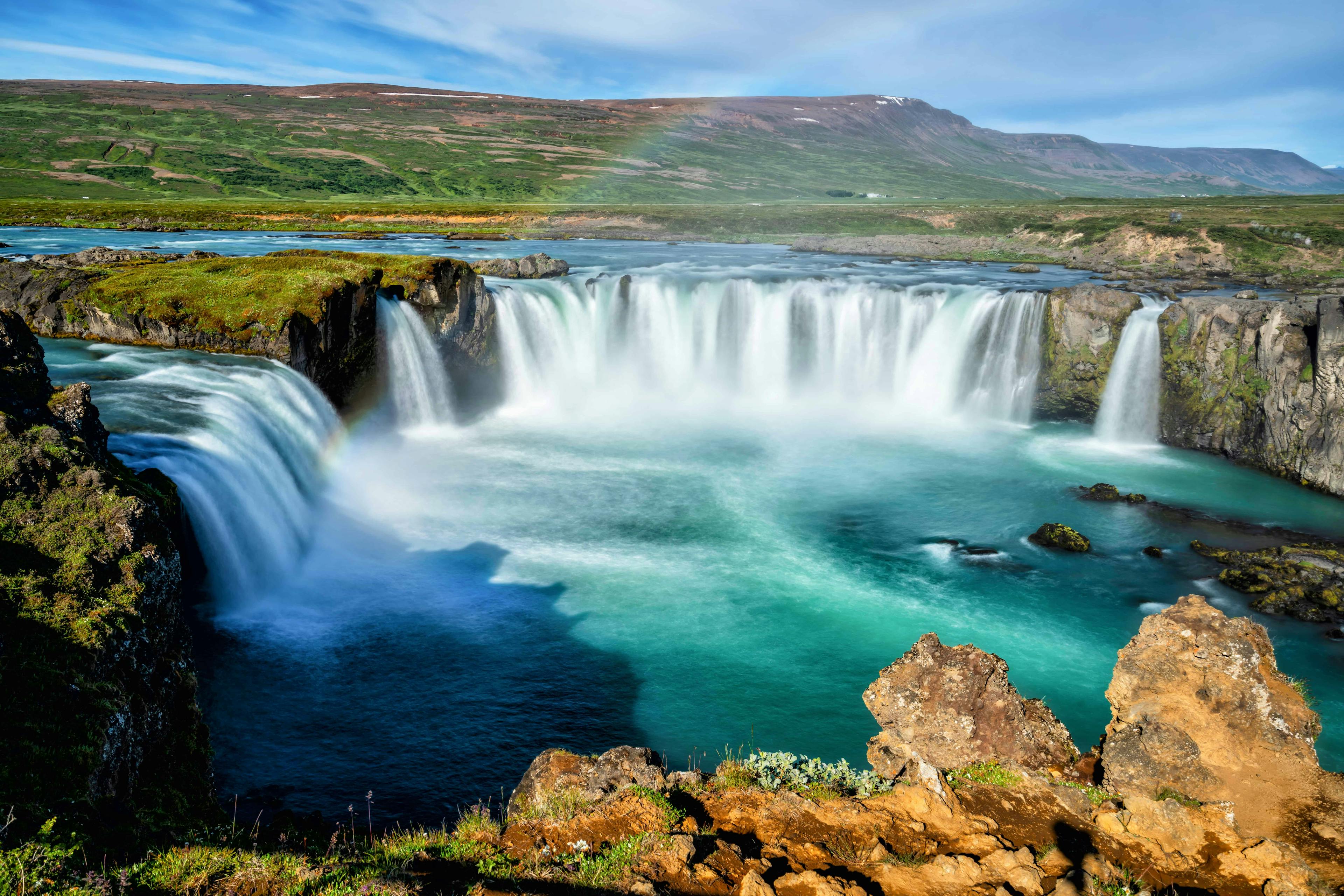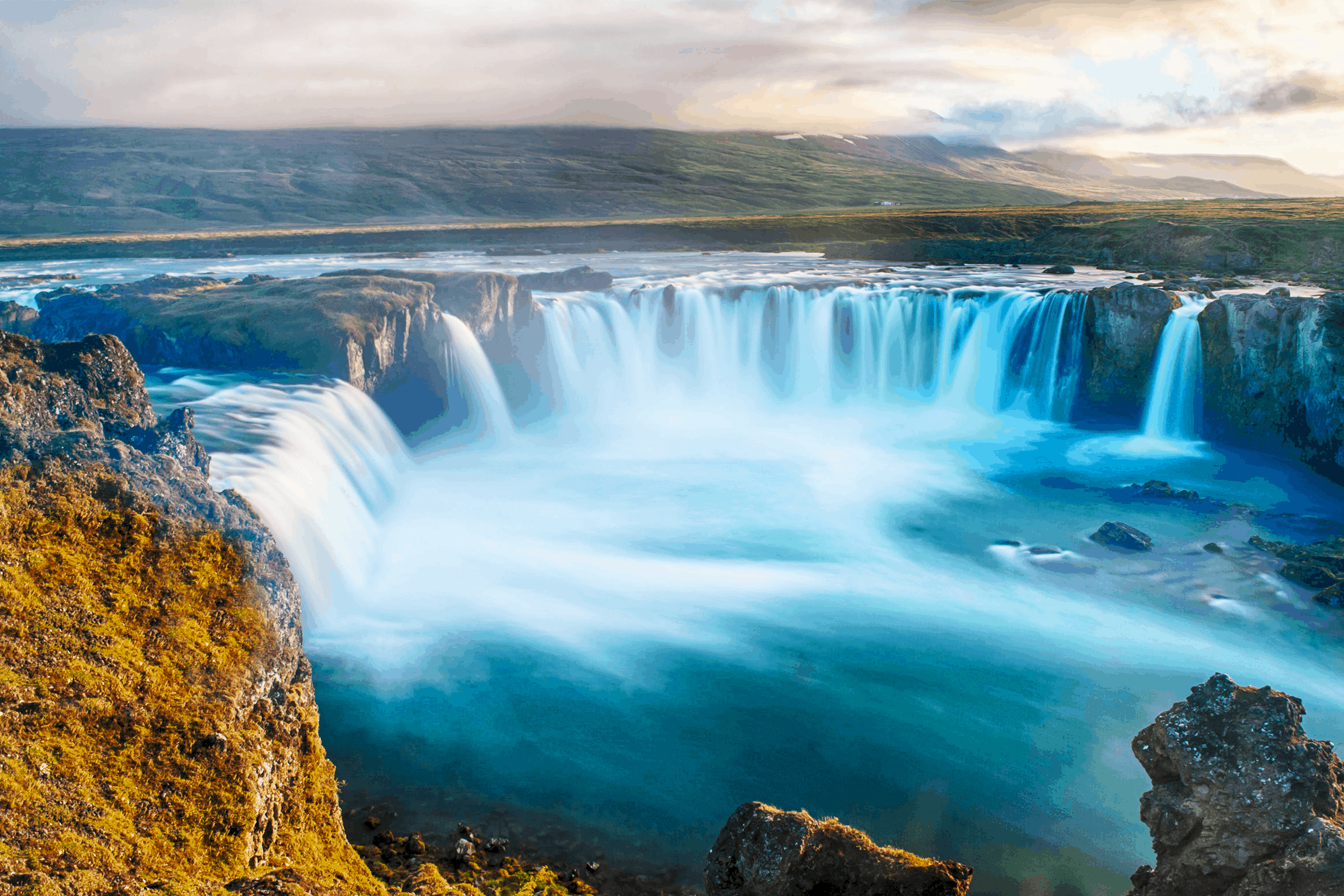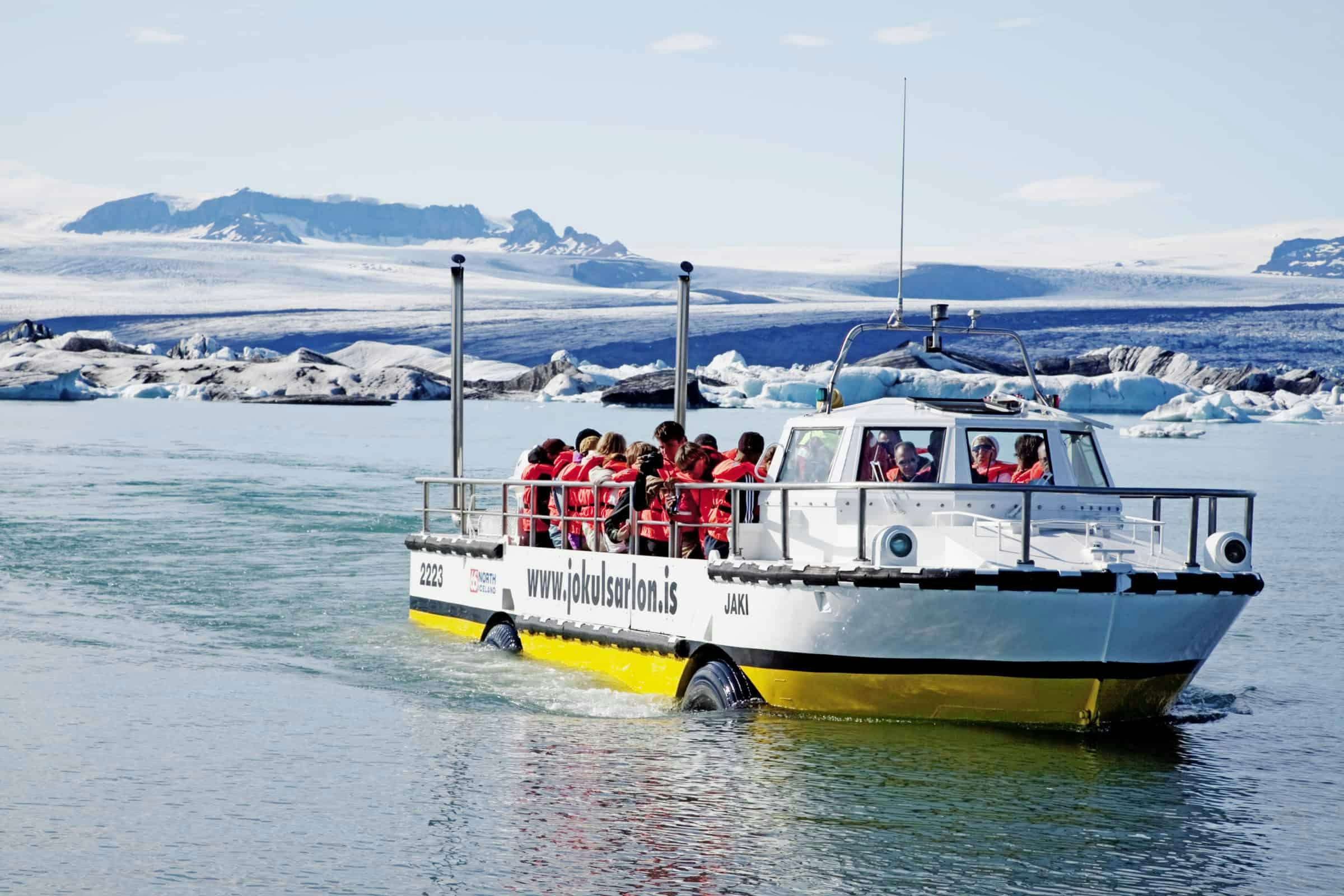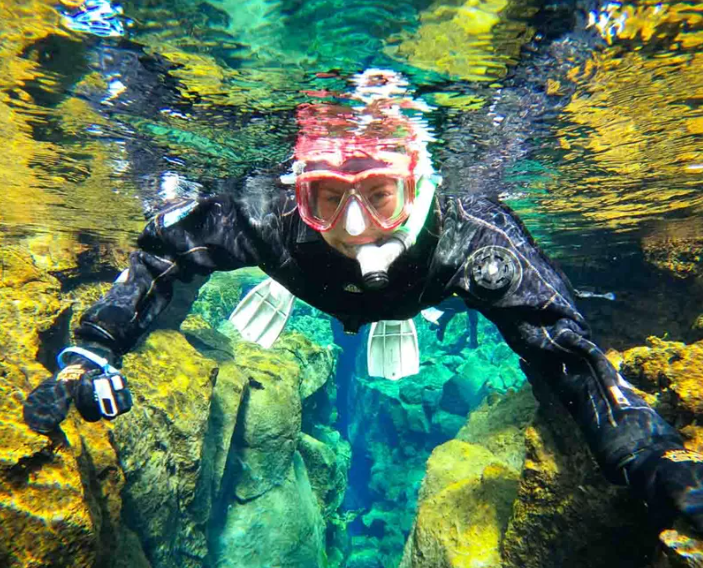Things to do in Iceland
Seeking adventure? Would you like to visit Iceland and experience the Northern lights, bath in the geothermal waters of the Blue Lagoon or see the black sand beaches? Or would you rather go on a hike in the pristine nature of the Icelandic highlands or go on a road trip to see all the natural wonders of Iceland? Here are a few things to do in Iceland.
What to do, what to do! We here at Iceland Travel offer great selection of tours – whether you are just stopping over or visiting for couple of weeks, let our team of expert travel enthusiast help you find the perfect tour for you. We have a great selection of various day tours and short breaks, if you’re just stopping over.
Type of tours
Road-Trips – not as scary as you think
If you’re seeking more in depth experience you should look at our selection of self-drive tours and road trips. Yes, we know that embarking on a such a tour can be intimidating, but we provide you with a digital itinerary and a tablet, so you won’t miss a thing on your tour and you have access to all the needed information at all times.
Guided tours
We also offer a great selection of escorted and guided tours. From sightseeing tours of the most popular Icelandic landmarks, to exploring the remote highlands, we offer a fantastic range of guided group tours escorted by the best guides in Iceland.
Type of activities
ATV/Quad Bikes
Don’t limit your sights to what can be seen from a tour bus window; get up close to Icelandic nature in its purest state with a thrilling ATV/Quad Bike adventure.
There are several areas in the country that offer ATV tours, each with a different viewpoint of Iceland’s stunning natural scenery.

Places to quad bike in Iceland
In Vatnajokull National Park, ATV bikers have the unique opportunity to ride directly up to the outlying tongue of Europe’s largest glacier where it can be heard creaking as the glacial ice melts in the glistening sunlight.
You can also go racing across the black sand beaches of Vik on the south coast, or the lush forest in Haukadalur valley, where the renowned Golden Circle is also located.
ATV in Reykjavik area
If you don’t wanna travel far from Reykjavik city to go quad biking, Reykjanes peninsula has plenty of ATV tours to offer in its rough landscape of lava fields, as well as the majestic mountains of Hellisheidi heath, only 30km east of Reykjavik.
No matter which surroundings you choose, one thing is for sure: ATV adventures in Iceland will provide fun memories that last a lifetime.
Birding
Iceland is an ideal place for bird watching as it lies on a major junction of migratory routes, and hosts at least 278 different bird species.
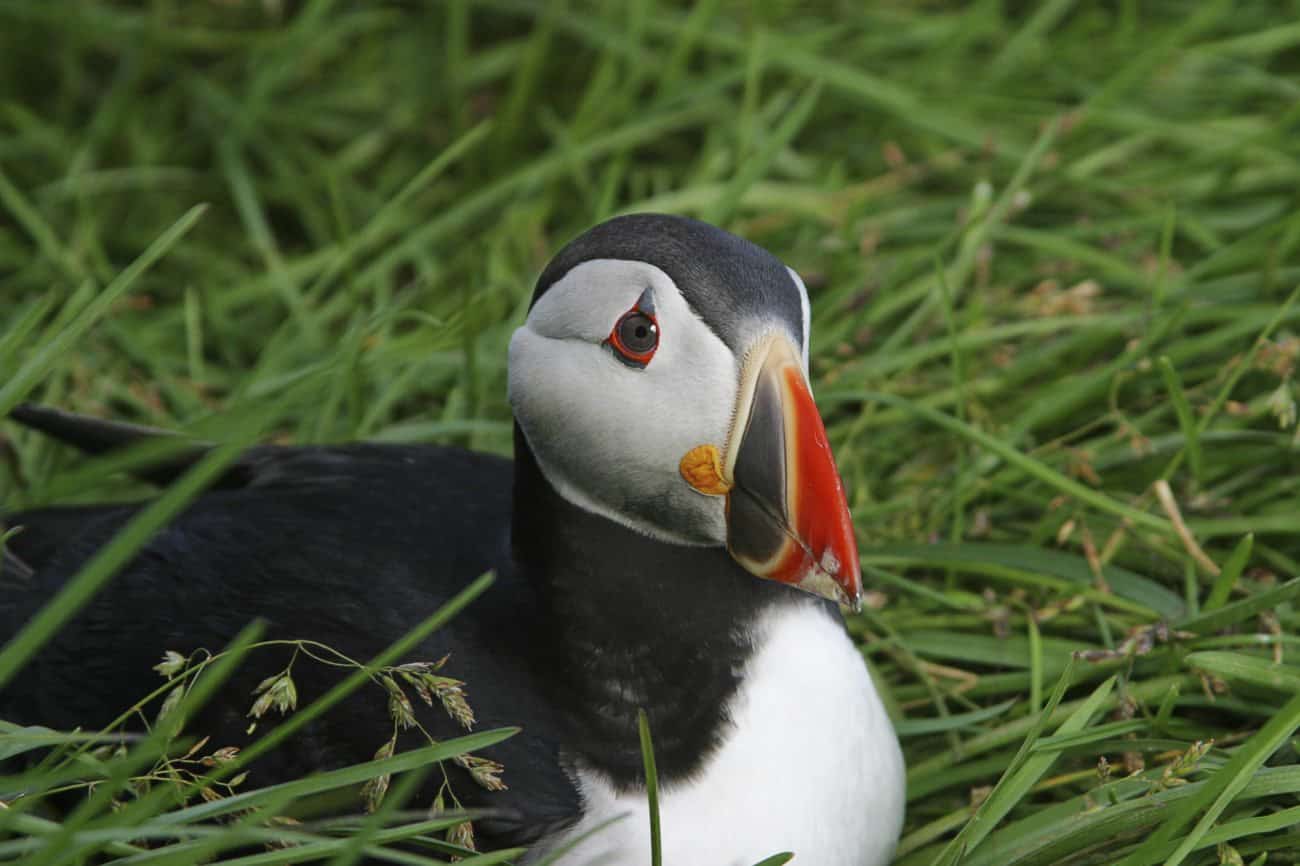
Where to go birding in Iceland
Latrabjarg cliff in the Westfjords is the largest bird cliff in the world. A great variety of cliff-nesting species can be found there, including the world’s largest razorbill colony.
The Vestmannaeyjar Islands are also famous for many kinds of seabirds, and are home to both the world’s largest puffin population. Lake Myvatn in the north has more species of breeding ducks than any other place in Europe.
Skua and puffins
The great skua colony on the sands in southern Iceland is the largest in the world. Seabirds such as puffins can be seen in many places around the country, including the popular Snaefellsnes peninsula, as well as eiders, Arctic terns, waders and passerine birds. The areas of glacial sand wasteland to the east and west of Skaftafell are home to huge colonies of great and arctic skuas.
Other common bird types seen in the country are guillemots, gannets, fulmars, cormorants, and kittiwakes. Especially sought-after sightings include the barrow’s goldeneye found all summer at Lake Myvatn, harlequin ducks seen on several Icelandic rivers, the white tailed eagle occasionally spotted in Breidafjordur bay, and the gyrfalcon which is Iceland’s national bird.
Cycling
Whether taking a relaxing ride through Reykjavik’s city streets or rushing over rugged landscapes, biking in Iceland is an invigorating way to explore unspoiled nature while breathing in our fresh clean air.
Cycling in Reykjavik area
Like many cities in Europe, Reykjavik is bike-friendly with charming city streets to explore as well as a multitude of amazing mountain bike tracks. With the opening of the new cycling and walking path between Reykjavik and Mosfellsbaer, it is now possible to cycle all the way from Grotta on the tip of Seltjarnarnes to the west of the capital, through Oskjuhlid in central Reykjavik, where the Perlan landmark building is located, and onwards to Mosfellsbaer, around 30 kilometers (18.5 mi).
Cycling in Iceland’s countryside
Iceland is a rewarding but also a demanding locale for a long-distance bike trip. The countryside is ideal for the more adventurous mountain biker, particularly during summer months. A ride along the Ring Road reveals amazing variety of nature from green riverbeds, black desert landscapes and colorful mountains to steamy hot springs, wild horses and highland tracks.
What to beware of when cycling in Iceland
The most important thing when cycling in Iceland is being well packed and prepared. The weather in Iceland is unpredictable, so the right gear and clothing is crucial. GPS, communication equipment and tools for basic bike repairs as well as extra tubes and tires are recommended. Bring warm and protective clothing that is both water and wind resistant.
If you plan on cycling in the Icelandic highlands, it is extremely advisable not to do so on your own. There, you should be prepared to ride on gravel roads, and you should be prepared to cross unbridged rivers. Don’t underestimate the power of nature – take proper safety measures beforehand.
To protect Iceland’s nature and vegetation, all off-road riding is forbidden. Helmets are a legal requirement for children under 15 years of age.
Last but not least, make sure you let someone know of your travel plans and itinerary. It can turn out to be a vital safety measure, in case of an emergency.
Flightseeing
Iceland’s unique rugged landscape is taken to an otherworldly level when seen from above. Aerial flightseeing, whether by plane or helicopter, takes visitors to stunningly beautiful, yet remote areas that are difficult to reach by other means.
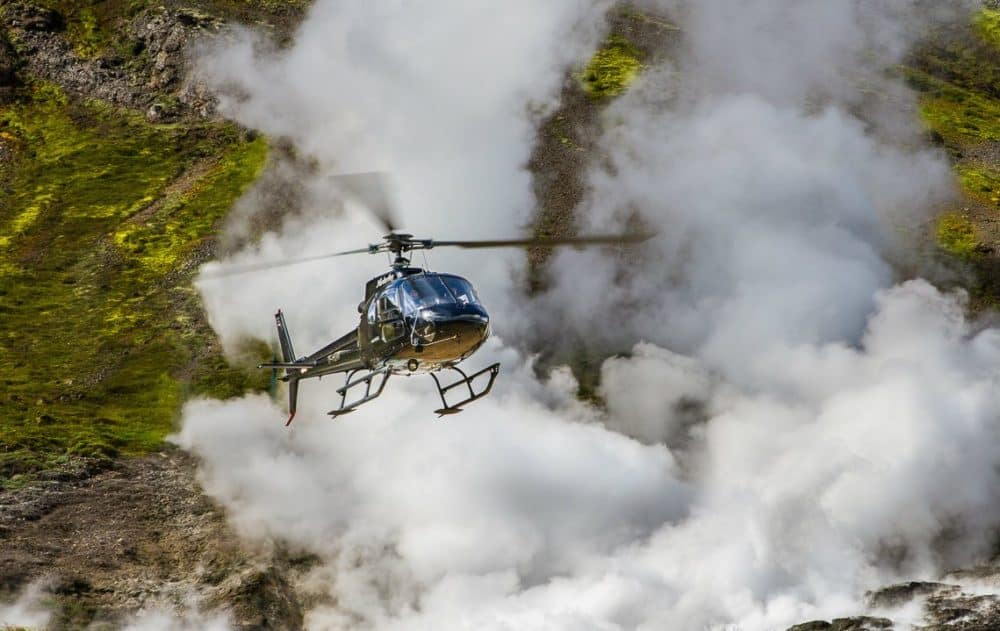
Flying over geysir at the Hengill area – Highland – Iceland
Airplane tours in Iceland
Aptly named the land of fire and ice, this tiny island in the North Atlantic provides a wealth of geological eye candy for the flight seeing visitor – impressive mountain ridges, ash cones, volcanoes, craters, vast lava fields and glaciers.
Various types of scenic flight tours are operated year round in several areas of the country and can be arranged for 20 minutes up to a few hours.
Glacier exploration
These glaciers aren’t going to climb themselves! Glacier exploration is a unique experience, literally transporting travelers to a higher plane, where different values apply.
The beauty of glaciers is eternal, but obstacles to enjoying it are largely a thing of the past. Glacier exploration is a unique experience, literally transporting travelers to a higher plane, where different values apply.
Tours are available where travellers make the ascent by bus or super jeeps, and then have time to explore in a variety of ways including glacier hiking, ice climbing, and by snowmobile. The main starting point for exploring several of the many glaciers that form the Vatnajokull cap is the town of Hofn in southeast Iceland.
Other glacier favorites are the mystical Snaefellsjokull on Snaefellsnes peninsula, Myrdalsjokull on the south coast, and Langjokull where west Iceland borders the highlands, the closest major glacier to the capital.
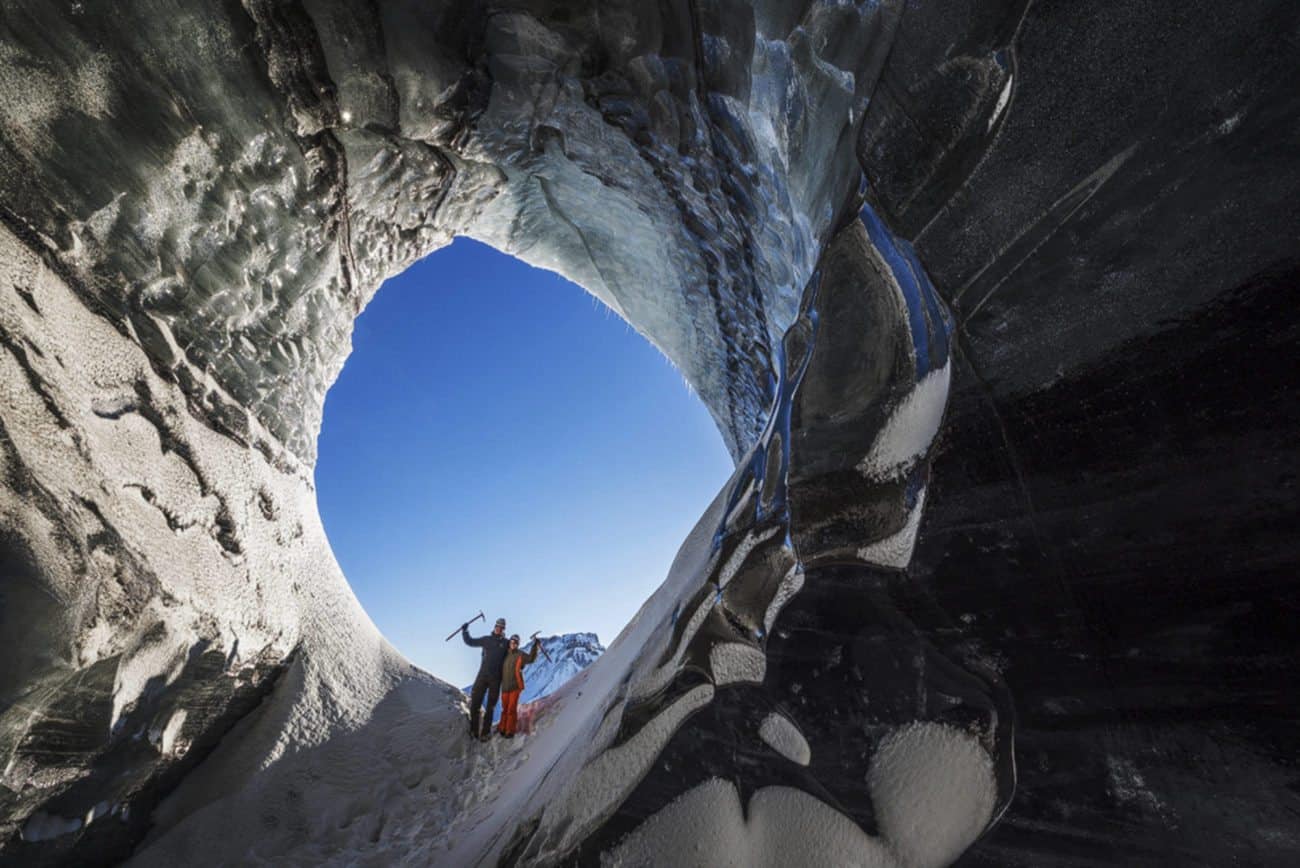
Glacier caves
Ice caving is another glacier activity that intrigues visitors. In the wintertime, glaciers form natural ice caves that can be explored by travellers if the circumstances are favorable.
However, if you are travelling in the summertime, don’t worry, you still have the opportunity to see a man-made ice cave in Langjokull glacier, available to travellers all year round. It may be man-made, but it’s nonetheless spectacular.
Golf
Iceland boasts over 60 golf courses, with dramatic landscaping you won’t see anywhere else in the world. Golf can be played from May through September, with 24-hour golf available in summer due to the midnight sun.
Best golf courses in Iceland
The world’s most northerly 18-hole course in Akureyri, Jadarsvollur, is set in vibrant grasslands and hosts the annual Arctic Open Tournament in June. One of Iceland’s oldest courses was founded in 1938 on the Westman Islands and is considered to be the most stunning course on the island with tee-off against a backdrop of volcanic walls, changing wind directions and steep ocean cliffs.
There are three 18-hole courses found in the greater Reykjavik area with jaw-dropping ocean panoramas. Some of Iceland’s course designs pay tribute to the first golf courses in Scotland while others are designed by famous course architects.
Golfing in the midnight sun
If you want to make your golfing experience even that much more memorable, try golfing in the midnight hours on a beautiful summer day, with the landscape and surroundings fiery lit from the midnight sun. Because of its northerly position, Iceland makes this enjoyable experience possible in the summertime.
Whether you’re teeing off near an exploding geyser or meandering on a seaside course with black sand beaches, golfing in Iceland is undeniably a one-of-a-kind experience.
Hiking
Take day or weekend hiking tours during winter and longer tours in summer, across lava, glaciers, lakes and sand.
Iceland’s unique topography and endless variety of stunning landscapes make it a natural location for hiking. Hikers love to breathe in our fresh clean air and unveil the island’s natural mysteries filled with ancient lava formations, thundering waterfalls, black sand beaches, vibrant vegetation and outdoor hot springs.
Laugavegur – Iceland’s most popular hiking trail
The most popular hiking trail in Iceland is the 79 kilometer (49 mi) Laugavegur that stretches through the island’s uninhabited interior. Only open in summer, the well-worn trek has cozy huts along the way and the scenery is spectacular with colorful rhyolite mountains, hot springs and thermal vents, neon-green mosses, enormous ice caps and raging glacier-fed rivers.
Other popular hiking trails in Iceland
There are several other favorite hiking spots located throughout the country including the picturesque Heidmork Nature Reserve located on the outskirts of Reykjavik which is known and loved by locals for its lush woodlands and beautiful wildflowers.
Skaftafell is Iceland’s most popular protected area, with good walking paths and varied glacial and forested scenery. Within Thingvellir National Park (UNESCO) and protected areas such as Myvatn in the north, there are marked paths ideal for day hikes. Another area that is attracting a growing number of backpackers is Hornstrandir in the extreme northwest, where unmarked trails link the beautiful fjords and bays of this rugged, uninhabited area.
The East Fjords district from Borgarfjordur Eystri southwards and Lonsoraefi in the southwest both offer challenging and exquisite wilderness hiking. The Kjolur and Sprengisandur routes are tough but highly rewarding to part hike.
The most recent location for hiking enthusiasts is the area surrounding the now famous Eyjafjallajokull volcano. Here trekkers can see for themselves the aftermath of the 2010 eruption with brand new lava formations and land freshly sculpted by floodwater from the melting glacier.
Horseback riding
The pure bred Icelandic Viking horse is the perfect riding companion for both beginners and experienced riders.
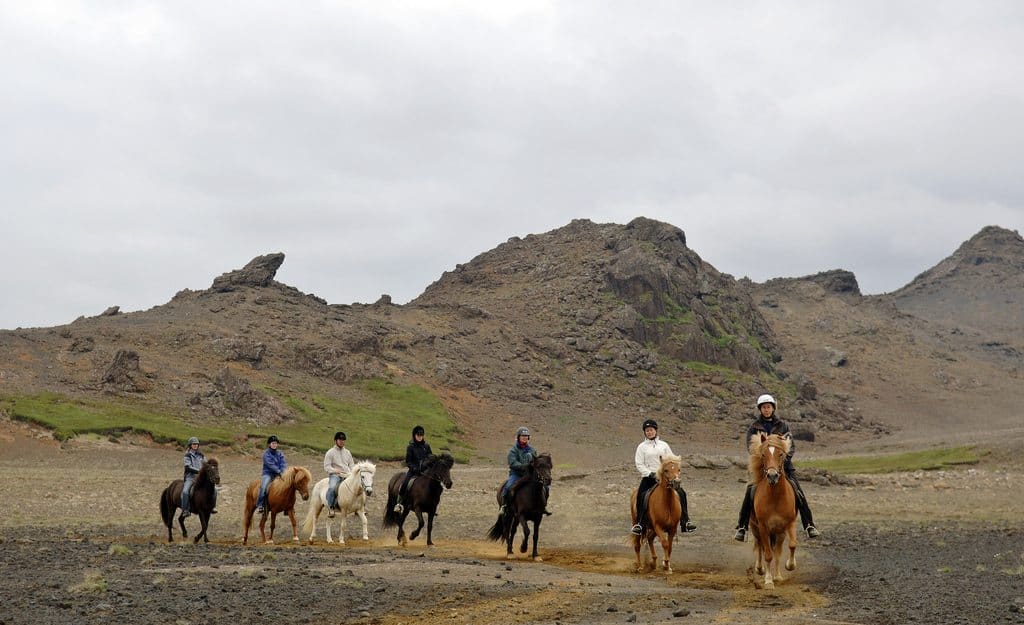
The Icelandic horse
When Vikings arrived in Iceland a thousand years ago, they brought the Viking horse with them. Strong and muscular, yet small and gentle, with great stamina, speed and intelligence, they are the perfect riding companions for handling the rough Icelandic terrain.
They are friendly, willing, docile animals that take obvious pleasure in carrying their riders across grassy plains, up and down rocky slopes, through rivers and over fields of rough lava, offering a unique way to enjoy the splendors and nature of Iceland.
The Icelandic purebred Viking horse controls five gaits while most other breeds only have three or four. The tolt gait is a very smooth ride that feels like gliding over ice. The Icelandic horse is perfect for the beginner rider.
Horseback riding tours in Iceland
It’s not going to be difficult to find horseback riding tours in Iceland. Dozens of farms and agencies all over the country offer tours suited for both beginners and the more experienced riders. Whether an hour’s tour or a multi-day tour, from an easy level to difficult, your wishes and needs can undoubtedly be accommodated.
Is there a weight limit when horseback riding in Iceland?
The Icelandic horse is capable of carrying adults without difficulty. The maximum weight is dependent on the tour chosen as well as the person’s riding experience, physical condition and height.
Hunting
Iceland’s pristine wilderness provides a bounty of wildlife game in reindeer, geese, ducks, ptarmigan and seabirds.
What animals can you hunt in Iceland?
There are large flocks of geese that gather in the fall in the valleys and along the mountainsides, before migrating to the south for the winter period. Ptarmigan are the most popular target for wing shooting and can be hunted from mid-October through mid-December.
Most seabirds are fair game and the season lasts from September through early May.
Reindeer hunting in Iceland
The reindeer hunting season lasts from July 15 to September 15 and takes place in nine defined hunting areas in the central highlands in east Iceland. Every year around 1200 tags are issued. The reindeer population in Iceland is 7000.
Are guns allowed in Iceland?
All automatic and semi-automatic rifles and most handguns are banned for public use in Iceland. People who hold a gun license can buy semi-automatic shotguns, bolt-action rifles, single-shot rifles and double-barrel rifles to hunt with, but all rifles over 8 millimeters in caliber are banned in Iceland.
Most visiting hunters bring their own guns and ammunition.
How to get a hunting license in Iceland
Those who plan to hunt in Iceland need to have a valid local firearm license as well as obtain a short-term gun license from the local police authorities, where you will need to present a valid hunting license and a personal ID.
River rafting and Kayaking
River rafting thrills and spills in swirling glacial waters. Lucky kayakers may also get a close-up glimpse of a seal or rare birdlife.
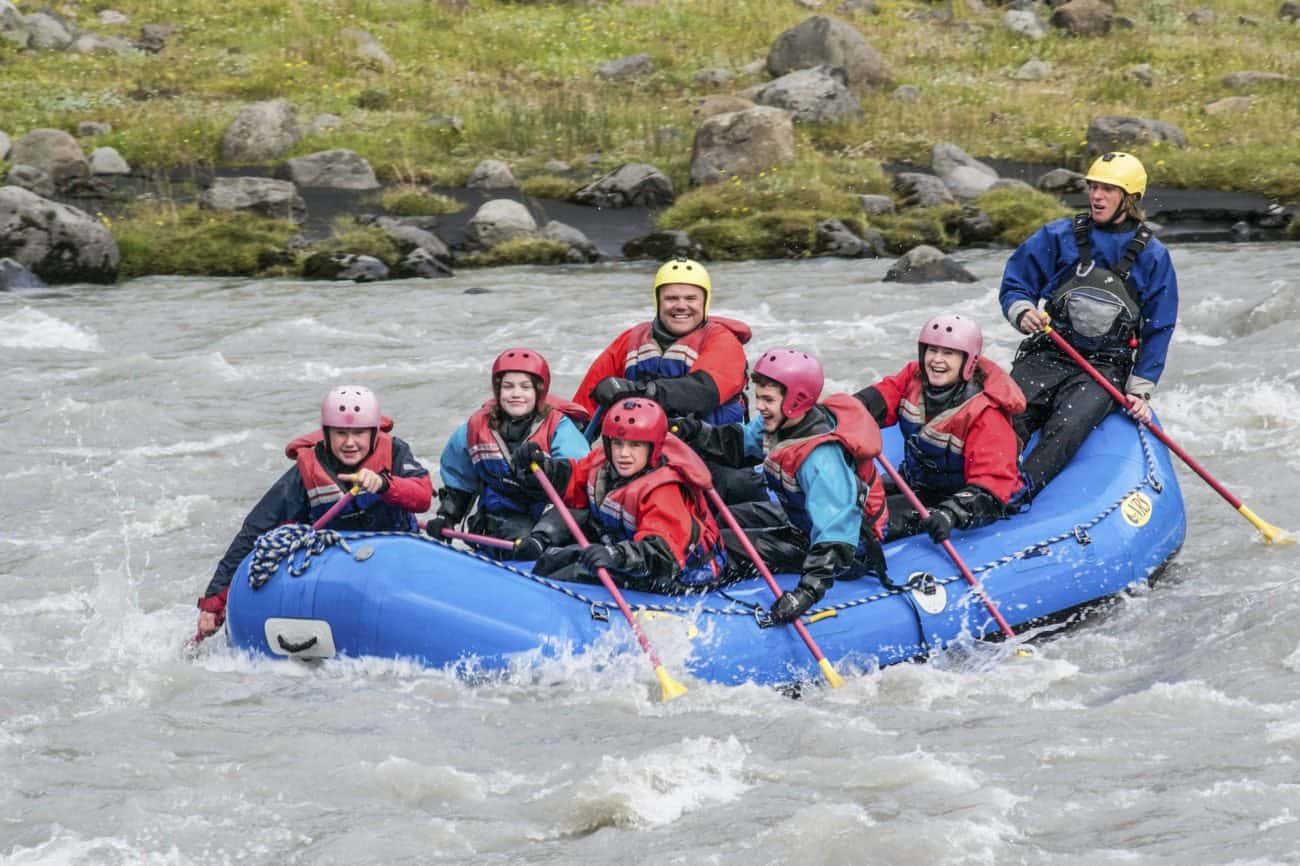
Let’s go river rafting!
Action lovers and adrenaline seekers will love Iceland’s swirling glacier-fed rivers tearing through narrow volcanic gorges, forming the perfect rapids for adventure rafting. Only one hour from Reykjavik is the stunning Hvita River rushing through the chasm down from Gullfoss waterfall.
Its stunning balance of serene canyons and dramatic rapids is ideal for newcomers who want to experience the white water thrill. Among the best-loved rivers for rafting enthusiasts are Jokulsa River East and Jokulsa River West located in North Iceland near Skagafjordur which both have dramatic waters in glorious surroundings.
Experienced river rafters head to the Holmsa River in the South which has been considered for the Rafting World Championship and offers spectacular backdrops of barren lava, fertile pastures and majestic waterfalls.
Kayaking
One of the most fulfilling ways to experience Iceland’s quiet nature is by kayaking along the many fjords, inlets, and sheltered coastlines. Sea kayaking just off the Icelandic coast is an unforgettable experience especially when you can get up close to curious seals, bird cliffs, and sea caves that are unreachable from land.
Best places to kayak in Iceland
It’s impossible to mention which places are the best to go kayaking in Iceland. It all depends on your level, needs and wishes. Be it in the surroundings of bird cliffs in the Westfjords, the rugged cliffs of East Fjords, the calm waters of the inland lakes or just the beautiful areas around the capital city – you’ll find that your kayaking options in Iceland are as versatile as the nature itself.
Tours for all experience levels are available in the Hvalfjordur Fjord area and lakes near Reykjavik, as well as Stokkseyri in the South, Isafjordur in the Northwest and Seydisfjordur in the East.
Skiing and Snowboarding
Downhill, cross-country, snowboarding, off-trail and heli-skiing are available in many parts of the country. And the best part about skiing in Iceland? No trees!
Best places to ski and snowboard in Iceland
Blafjoll mountains: Winter skiing, both downhill and cross-country, is available in many parts of the country. Located just 33 kilometers (21 mi) from the city center, Blafjoll (Blue Mountains) is the largest ski resort close to Reykjavik with great slopes for downhill skiing and snowboarding as well as tracks for cross-country skiing. The season in Blafjoll runs between mid-November and May and the resort is open when snow and weather permit.
Hlidarfjall ski resort: Undoubtedly Iceland’s favorite ski destination is Hlidarfjall in North Iceland near Akureyri. This premier ski resort is famous for consistent snow and enchanting water views of the surrounding fjords. The season lasts from the beginning of December until the end of April and floodlit slopes make night skiing possible during the dark days of winter.
Westfjords: The Westfjords are an up-and-coming locale for extreme skiers with opportunities for off-trail, downhill skiing and the ultimate adventure, heli-skiing where high-mountain peaks are accessed by helicopter and skiers race along the mountainside all the way down to the ocean.
Snorkeling and Diving
Dive in a volcanic fissure filled with icy glacial water where you are literally swimming between continents.
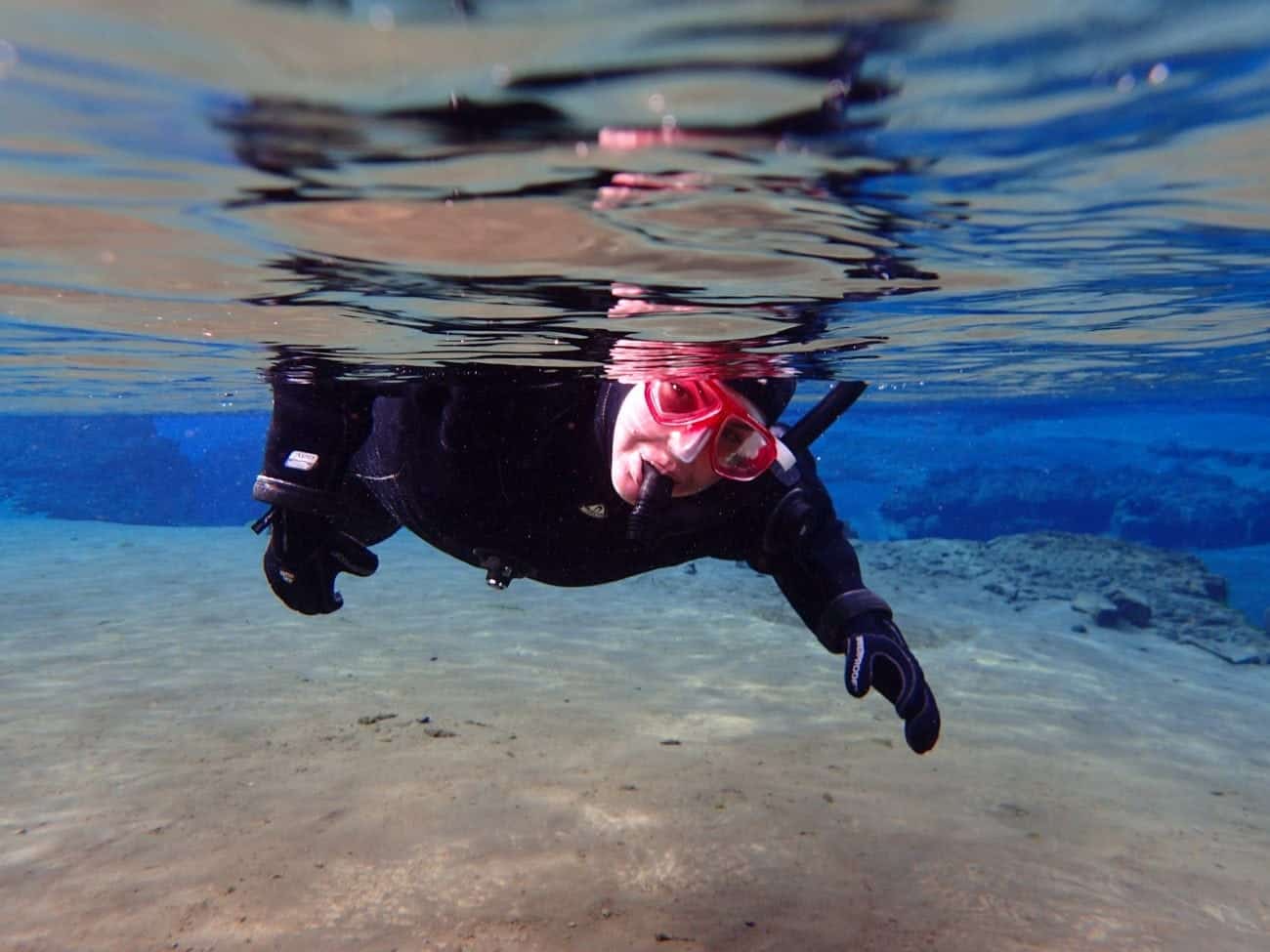
Snorkeling between continents in Silfra
Iceland may not be the first place that comes to mind when considering a snorkeling or diving destination, however Silfra in Thingvellir National Park (UNESCO) is rated by professional divers and snorkelers as one of the best freshwater sites in the world. Silfra is a deep, dramatic fissure at the bottom of Lake Thingvallavatn that lies between the American and Eurasian tectonic plates where divers are literally swimming between continents.
The crystal-clear, pale blue water comes from a melting glacier 48 kilometers (30 mi) away. The clarity of this water is so remarkable that divers experience a heady flying sensation as they plunge through the glacial waters. This exotic and serene journey is made even more surreal by the bizarre submerged lava formations and underwater landscapes.
Snowmobiling
Whether you call them snowmobiles, sno-cats, or skidoos, they all mean the same thing – winter adventure! Snowmobiling is a great outdoors sport and driving across an Arctic glacier is an incredible experience.
There is nothing quite like the feeling of racing across an Arctic glacier at 40 kmph (25 mph) with nothing but icy snowfields surrounding you and the heavenly skies above.
Snowmobiling is an exciting, empowering sport where no prior skill is needed and after only a few minutes you feel like a professional snowmobile racer.
Snowmobile tours in Iceland
Iceland has a total of five glaciers, three of which are Europe’s largest, so there are plenty of opportunities for snowmobile excursions all year round.
We offer plenty of tours and activities where you can explore the glaciers riding on or in a snowmobile. Make sure you don’t miss out on this great experience.
Spas and Swimming Pools
Thanks to an abundance of geothermal water, spas are a way of life in Iceland and one of the highlights of any trip.
Take a dip in one of Iceland’s hundreds of outdoor, geothermally heated swimming pools. Soak away life’s stresses by relaxing in a hot tub while chatting with the locals. Many facilities offer sauna, steam rooms, massage therapy and other spa treatments.
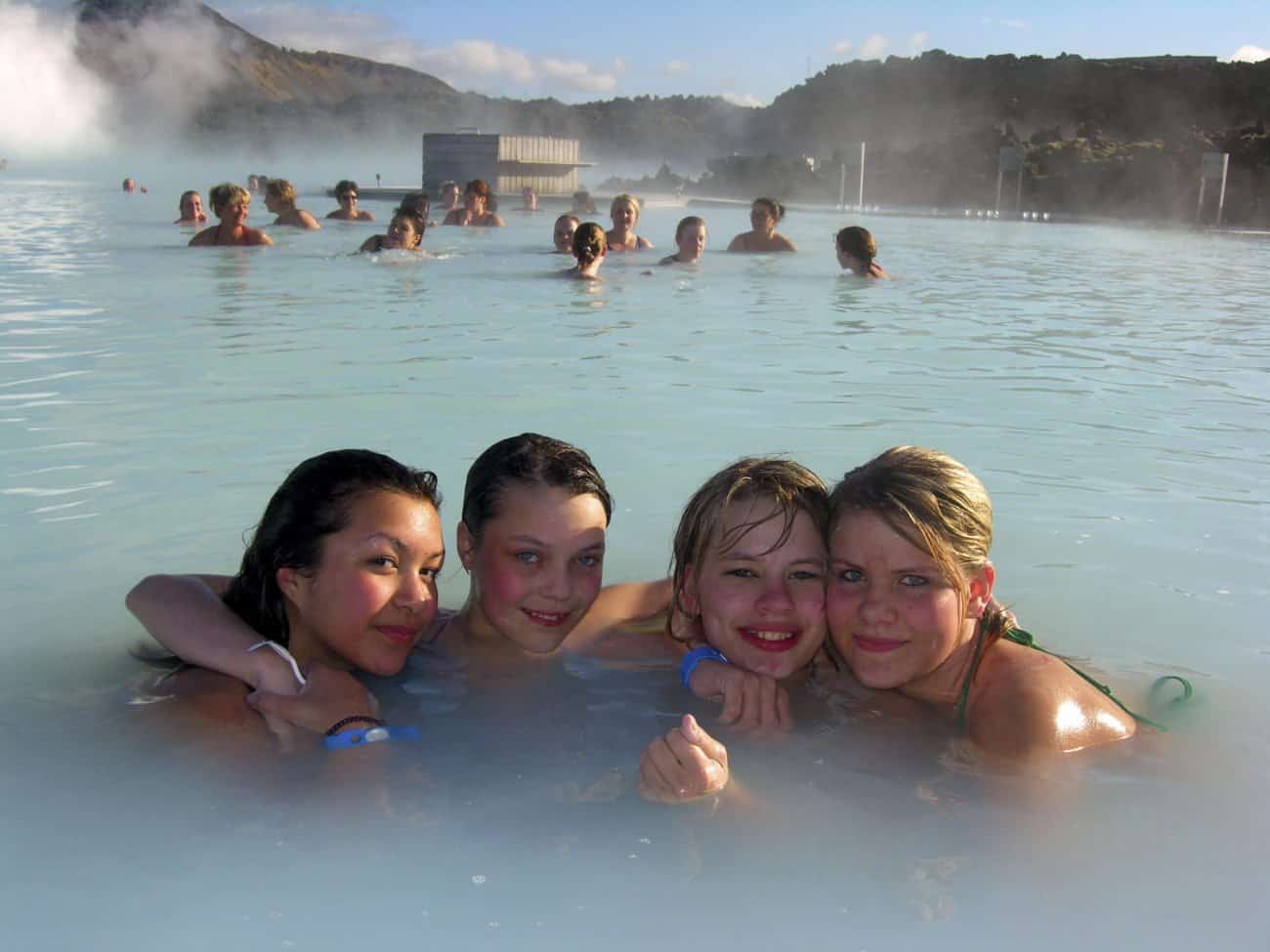
Outdoor geothermal pools and spas
Outdoor hot springs are hidden throughout the countryside and are the ultimate interaction with Iceland’s raw nature and a highlight of any trip. The most famous outdoor spa is the Blue Lagoon located near Keflavik Airport. The therapeutic, milky blue, mineral-rich waters are ideal for relieving jet lag when arriving or for a last dip before the transatlantic flight home.
Lake Myvatn Nature Baths in the north offer bathers a completely natural experience in an area of fragile beauty.
The newly opened Laugarvatn Fontana Spa is located near the Golden Circle of geothermal wonders, where you also have the chance to taste rye bread made in a geothermal bakery!
Finally, the Krauma spa is something else and absolutely superb. Make sure you check it out.
The Secret Lagoon
The oldest swimming pool in Iceland is the Secret Lagoon, located in the small village of Fludir in the Golden Circle area. It was built in 1891 and has recently become increasingly known in Iceland, especially for being a great alternative to the often fully booked Blue Lagoon. The water in the Secret Lagoon is fed by a hot spring that constantly provides it with fresh water that stays at 38-40 degrees Celsius throughout the year.
Sport fishing
All good things come to those who wade! Iceland’s pristine waters abounding in fresh fish are sought out by anglers from all over the world.
Sport fishing in Iceland provides countless possibilities. There are over 100 self-sustaining salmon rivers in the country, 20 of which fall into the elite category. Lakes and rivers provide outstanding trout fishing opportunities for both brown trout and Arctic char, and deep sea fishing is possible from virtually every coastal town on the island with success in nearly every trip. During winter, ice-fishing is quite popular.
Fishing season in Iceland
The salmon season spans from May 20 until the end of September. An increasing number of rivers in Iceland are open exclusively for fly fishing throughout this season.
The trout and char fishing season spans from the beginning of April until October 10.
License for fishing
For salmon fishing, permits must be reserved well in advance, but trout fishing permits can be obtained at short notice, often the same day.
Important to know before fishing in Iceland
Iceland’s unpolluted and fragile waters are disease-free. Therefore, if you are coming from abroad, you will need to show a certification that all your equipment, including waders and boots, are disinfected. This can be done upon arrival at Keflavik airport for a small fee.
Super-Jeeps
Super Jeep adventures are a thrilling way to traverse Iceland’s landscape of extreme contrasts and an experience unique to the country.
Let’s face it – to really discover Iceland in winter, you need suitable transportation! Super Jeep adventures are a thrilling way to traverse Iceland’s landscape of extreme contrasts and an experience unique to the country.
What is a Super Jeep?
Sometimes called super trucks or monster jeeps, these modern day Viking vehicles are not your average 4WD vehicles. They are specially modified to handle Iceland’s demanding terrain with meter-high tires, upgraded engines, and state-of-the-art GPS navigational systems that could guide drivers through winter’s worst blizzard.
Offroad travelling in Iceland
Super Jeeps are especially good for the offroad travelling in Iceland; forging through rivers, driving on snow or traversing icy glaciers, mountains, volcanic terrain and black sand beaches. However, it is strongly recommended you go offroad travelling only under the supervision of a professional who knows in which areas it is permitted, areas where precious nature will not be spoiled or damaged.
